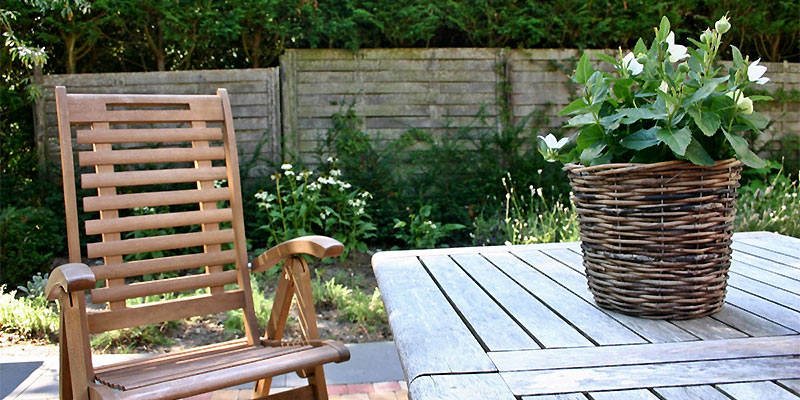
If you don’t want to replace garden furniture year on year, storing is safely and properly over winter is the best way of keeping it in excellent condition.
Preparation and Care
Dirt and moisture is the enemy of even the most robust garden furniture. Keeping everything in good condition through the winter makes staging the garden next summer much easier and quicker. And it doesn’t take very long.
- Wicker and rattan furniture — synthetic rattan is quite tough and durable but can start looking grubby if it’s not cared for. Brush off loose dust and dirt with a stiff brush, taking care not to damage the surface. The brush attachment on your vacuum cleaner is good for getting into all the nooks and crannies to remove dry dust. Once done, sponge the furniture with a mixture of ordinary washing up liquid in lots of warm water. Give it a good rinse with cold water from the garden hose spray, and let it dry completely before putting it into storage. Treat natural bamboo, cane or willow furniture in a similar way, being sparing with the water.
- Wooden furniture — clean with sugar soap, leaving the solution on a few minutes to soak into stubborn areas. Give it a good rinse with the hose and turn it upside down to dry.
- Plastic furniture – plastic furniture is the most durable of all, and you can clean it anyway you like and not do much damage. Like any other, make sure it’s completely dry before stacking chairs and putting into store. While it’s tough, it can discolour if left outside so it’s best to store indoors, somewhere dry. Bleach will remove some stains or discolouration.
- Give tables a good wash too, scrubbing stains or moss off glass surfaces and from the joints on the legs.
- Wrought Iron furniture – can be prone to rust, but restored with wire wool and a fresh coat of paint.
When outdoor wooden furniture looks tired, restore it with a wood stain finish after sanding and applying a restorer to put back moisture. Teak oil is also excellent for protecting wood that stands outside all year. Let the first coat dry completely before applying the next.
Don’t Neglect the Outdoor Soft Furnishings
Cushions, chair pads, outdoor table cloths or picnic blankets also need some preparation so they’re fresh and ready for next year. It’s particularly important these things are stored in a dry place to prevent mildew and mould.
Wash all the covers you can remove, not forgetting sun lounger covers which may have oily sun creams on them. If you can’t remove the covers for cleaning, sponge the surfaces of larger items to remove as much dirt as possible. Try dipping smaller cushions briefly into a bowl of sudsy water then hang them up to dry. Make sure they’re completely dry before storing them, then cover them with plastic sheeting to keep them clean.
An Alternative Storage Solution
If you prefer not to have your garage or garden shed full of outdoor furniture over the winter, there is an alternative in the form of self storage. Locations are usually handy and easy to get to, and terms are short and flexible so you don’t have to feel locked in for a set time.
Some people find it an ideal solution for creating more space at home permanently by running self storage rooms all year round. During the summer, they store items only used in winter months then rotate as the season turns. It’s a system that works well for owners of smaller homes where permanent storage would take up living space.
